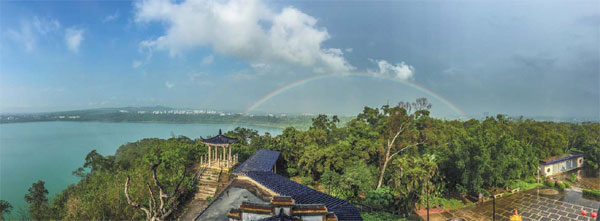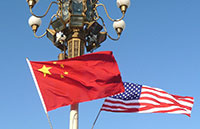Zhanjiang seeks UNESCO status for unique history
By Xu Jingxi in Zhanjiang, Guangdong (China Daily) Updated: 2015-07-14 08:05|
Zhanjiang Huguangyan National Geopark, one of the most popular tourist attractions in Zhanjiang, has the world's largest Maar volcanic lake, which was formed 140,000 to 160,000 years ago. Zhang Xiao / China Daily |
Focus on soft power
In the meantime, Zhanjiang seeks to strengthen its soft power as it aspires to the status of the central city in the Beibu Gulf rim.
"Apart from politics and economy, a central city of an area should also have a cultural influence that can radiate to other cities in the area," Nie said.
Zhanjiang has many distinctive folk customs and arts, especially on the Leizhou peninsula, and boasts six State-level intangible cultural heritage items, including the dragon dance from Donghai Island and the Leizhou stone dogs.
"It is these folk customs and arts that make Zhanjiang special and attracts visitors from home and abroad. We will keep on cultivating inheritors of Zhanjiang's intangible cultural heritage and focus on harnessing their potential to foster the tourism industry and the cultural creative industry," Nie said.
To give a larger, more modern stage for the display of its culture, Zhanjiang started the construction of a 230,000-square-meter cultural space - which includes an opera house, museum, library, art gallery and art center - earlier this year and plans to complete the project within three years.
"These splendid architectural works are also expected to be the first-choice stage for the high-end, international cultural and art events coming to cities in the Beibu Gulf rim in the future, showcasing Zhanjiang's status as the rim's cultural center," Nie said.
- 2015 China International Fair for Investment and Trade kicks off in Xiamen
- China's commodity imports robust in Jan-Aug period
- China stocks rebound 2.92%
- 2015 China box office already past 2014 total
- China foreign trade decline widens in August
- Interview: JP Morgan's senior executive bullish on China
- Innovation, development the focus for NZ mayors
- Lives of freelancers


















